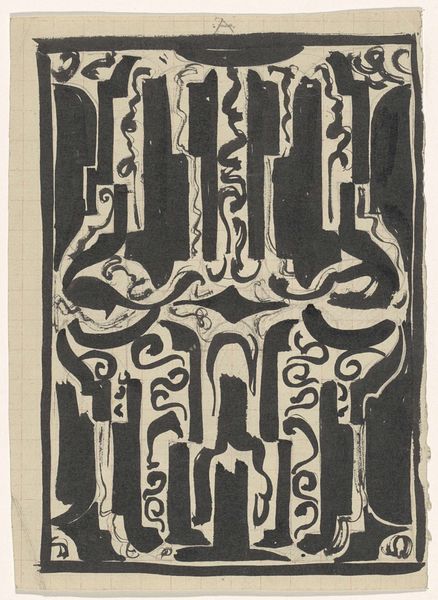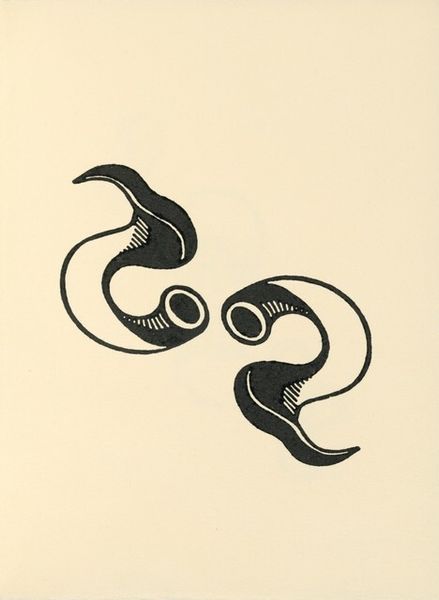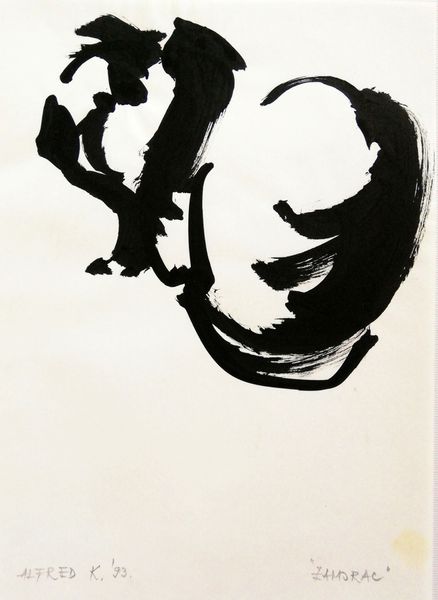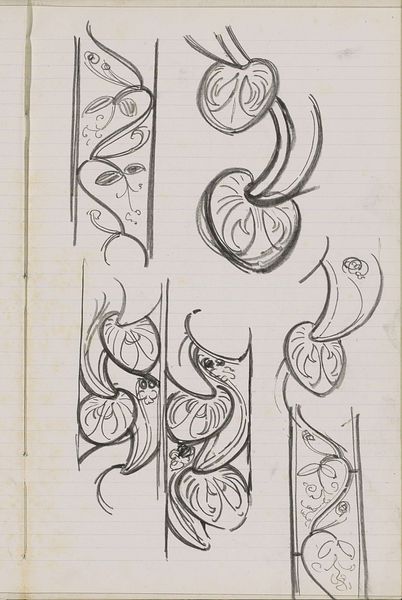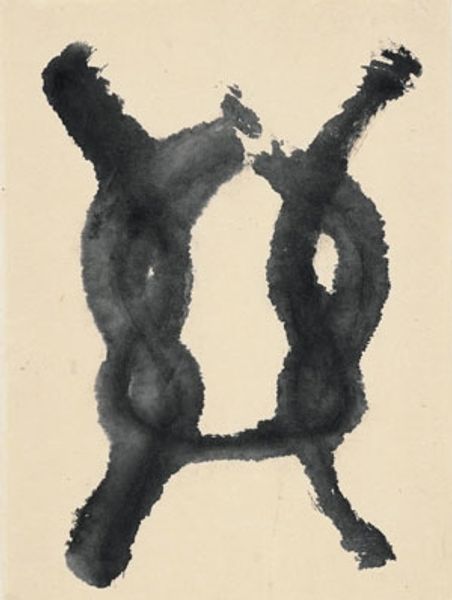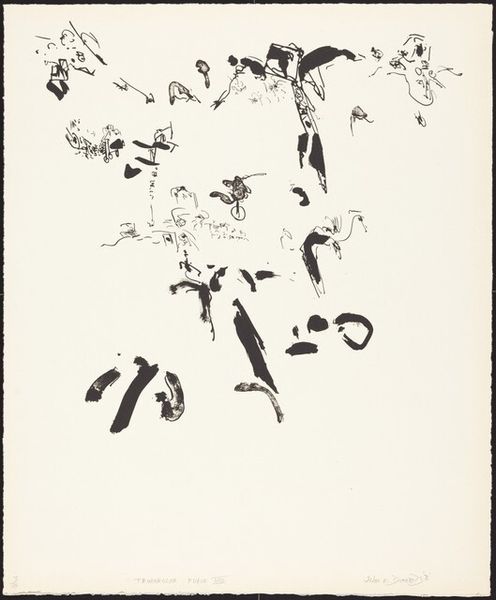
Copyright: Public domain US
Editor: This ink drawing is called "Illustration for Tristan Tzara's 'Vingt-cinq poèmes'," created in 1918 by Jean Arp. It feels both organic and completely abstract to me, almost like a Rorschach test. How do you interpret this work? Curator: Indeed, the form invites projection. It’s suggestive, isn't it? I'm immediately drawn to how Arp, immersed in the Dada movement, used abstraction to challenge conventional modes of representation. The biomorphic shapes could be seen as echoing primal forms – perhaps even subconsciously evoking the human form, disrupted and reassembled. Editor: I see that now! It feels very intuitive and impulsive, but do you think there was a conscious intention behind using these particular shapes? Curator: Dada was all about disrupting the rational. Yet, even within seeming chaos, patterns and symbols persist. Consider the era – World War I was raging. Do you see any possible symbolic representation of war in its fragmented and ambiguous form? Editor: That's an interesting point. It makes me think about destruction and how war deconstructs everything. So maybe the abstract form isn't just random; it's a reflection of a broken world. Curator: Precisely! It is also an attempt to access more primordial images, symbols that linger beyond cultural and historical events. Arp’s creation of anti-art serves a potent reminder: amidst societal fragmentation, primal longings remain ever-present. Editor: That connection between societal upheaval and abstract imagery is something I hadn't considered before. Thanks for shedding light on that. Curator: My pleasure. Symbolism offers infinite interpretive possibilities, if we look and feel deeply.
Comments
No comments
Be the first to comment and join the conversation on the ultimate creative platform.




